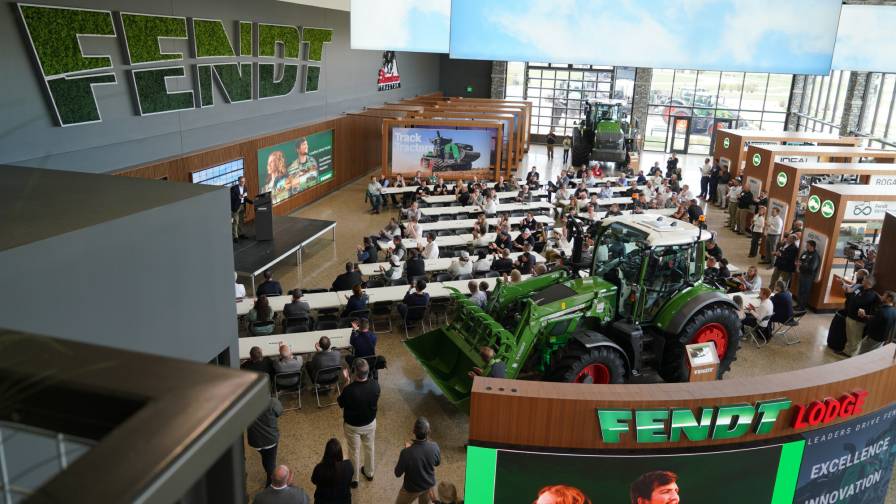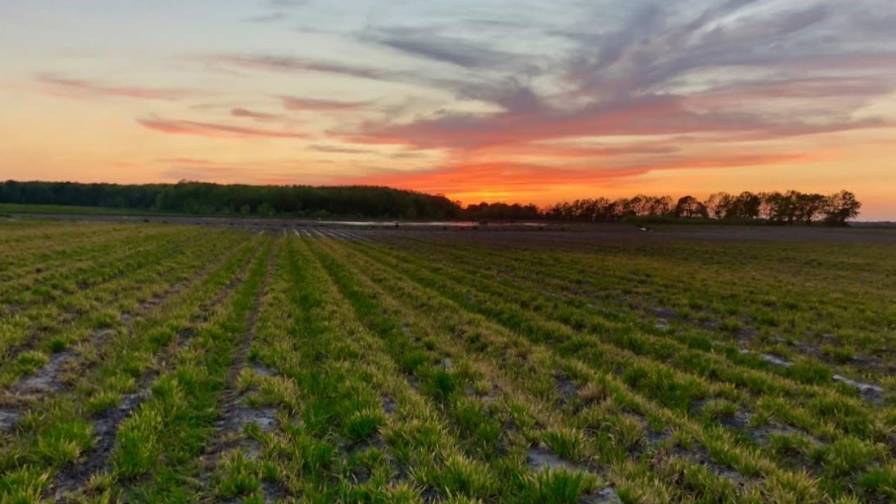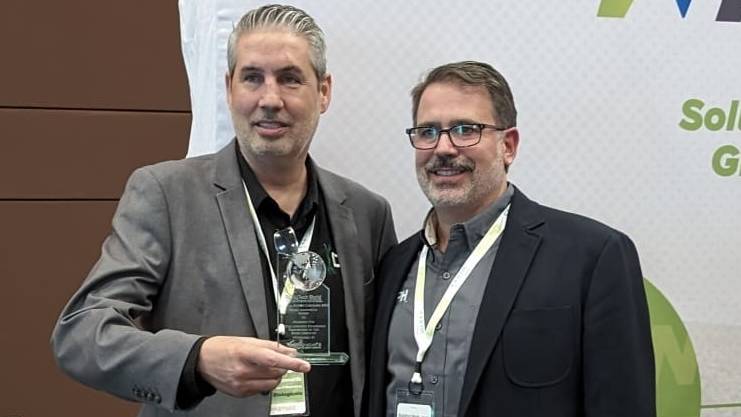Talking Weed Management Strategies At Farm Progress 2016
The annual Farm Progress Show — this year staged in Boone, IA — is always a great place to catch up with the crop protection companies, as most make available to the media a plethora of agronomic and product experts throughout the three-day show.
This year, I chatted with representatives from DuPont Crop Protection, WinField US, and Valent U.S.A. about what retail agronomists and their grower-customers need to be on the watch for with when it comes to resistant weeds this fall.
DuPont Pioneer
At the DuPont Crop Protection booth I met with Retail Account Managers Nate Studer and Ron Geis, who work directly with Iowa-based ag retailers and nurture that relationship on behalf of DuPont.

The DuPont Pioneer exhibit at the 2016 Farm Progress Show was a popular destination among attendees.
Studer told me that while the “economics on that are getting tough” when I asked him if retailers were still doing a lot of fall residual herbicide applications, but he says preemergence products are still providing good value in Iowa.
“I certainly think our growers understand the value of preemergence herbicides, what they provide from a residual standpoint, so that our second pass (especially in soybeans) is an easier pass, but that’s a little bit tongue-in-cheek anymore because of the issues we’re having around some tolerance and resistance, and mother nature plays a big part in that as far as efficacy of some of these post herbicides.”
Geis, who works the Northwest region of Iowa, placing DuPont’s herbicide products with retail, says soybean growers need to stay ahead of the game when it comes to waterhemp.
“A big thing we’re promoting with retailers that’s a bit different from the past couple years is to try and get ahead of the waterhemp problem on soybeans,” Geis explains. “As such we’re recommending residual products early in the season plus more residual products later — we do this routinely in corn.
“We’re talking preemergence and then a postemergence at V3-V4, somewhere in that stage on soybeans. It’s for extending residual control — the products that we have in the market, some will only kill the weeds that are there today but a weed that comes in tomorrow, it’s home free, requiring another application. And then the day after that it’s another application.”
WinField US
Steve Barnhart, an Iowa-based Agronomy Manager that I spoke with at the Shoreview, MN-based crop protection company’s climate-controlled booth, was making the 2016 Farm Progress Show his swan song, having announced his impending retirement.
Barnhart said that in his territory giant ragweed, marestail, kochia, and “a little Palmer too,” were the most common herbicide-resistant weed species his growers encountered in 2016, with glyphosate-resistant Kochia proving a bit more difficult to manage than in years past.
“It (Kochia) has always been hard to control with Roundup but in Western Kansas they’ve been fighting it with dicamba for so long it’s actually resistant to dicamba now,” Barnhart said.
Going into 2017 Barnhart sees resistant waterhemp continuing to give growers headaches unless they catch it when it’s small.
“Waterhemp is the biggest issue and the biggest thing is don’t let it get out of the ground,” he explained. “Once it’s out of the ground you’ve got a major challenge ahead of you, so we need to concentrate on getting the right residuals out there in the right combination, if we’re going to get consistent control that’s what we have to do. It doesn’t necessarily have to be the most expensive herbicide program to be efficacious, but the cheapest program is rarely efficacious.”
Valent U.S.A.
We sat down with Dawn Refsell, Manager, Field Development, Midwest Commercial Unit, at the Valent booth and asked what she had been hearing thus far at the show regarding weed resistance and growers looking for solutions.
“A lot of the conversations we are hearing so far at Farm Progress this year is: ‘I am using a pre but I need more residual,’” she recalled. “They are knowing that they need the residual, it’s taking the pressure off the post-applications, but they want flexibility in their post timing and they’re not getting it — everything is coming in as a rescue (treatment). And they don’t want to have to spray large weeds post-emergence so the mindset is there that they want to invest on that preemergence product up front rather than having to come back and rescue.”
Refsell works out of Lathrop, MO, and said that regarding her territory and herbicide-resistant weeds “Missouri is a disaster. Around St. Louis, Illinois area, come across 70, up to 72, that kind of triangle there, is kind of a mess. Northern Indiana basically from Indianapolis north towards Chicago — WOW. Palmer EVERYWHERE.”
Looking back on her experience in 2016, Refsell also witnessed an uptick in volunteer corn escapes.
“For some reason, there were a lot of people that didn’t want to control their volunteer corn this year? That was one of the areas of cutting cost — controlling volunteer corn. Very noticeable driving around the Midwest,” she said.
We also asked Refsell what message she had for growers that are thinking about cutting back even further on herbicide spends in 2017.
“To me it’s all about your return-on-investment,” she said. “Weed management is essential for crop yield; in order to get a yield you must manage your weeds. So look at your weed management plan as a whole and determine where you are getting your best return on investment. And it’s clearly at the beginning with that residual. And so, if you’re going to look at cutting costs, don’t cut it where you’re getting the best return on investment. Continue to invest in your residual and then reevaluate your post-applications.”






